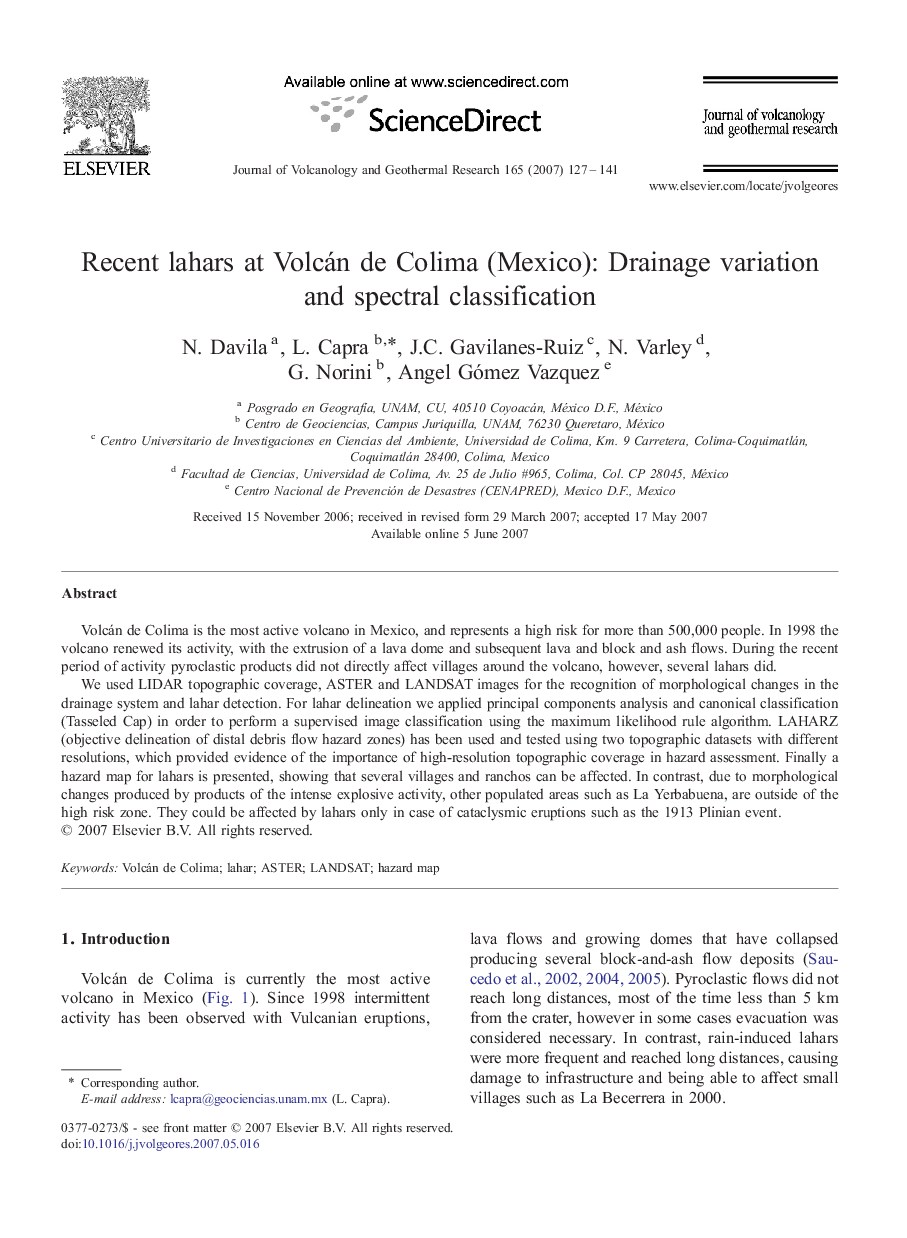| Article ID | Journal | Published Year | Pages | File Type |
|---|---|---|---|---|
| 4714659 | Journal of Volcanology and Geothermal Research | 2007 | 15 Pages |
Volcán de Colima is the most active volcano in Mexico, and represents a high risk for more than 500,000 people. In 1998 the volcano renewed its activity, with the extrusion of a lava dome and subsequent lava and block and ash flows. During the recent period of activity pyroclastic products did not directly affect villages around the volcano, however, several lahars did.We used LIDAR topographic coverage, ASTER and LANDSAT images for the recognition of morphological changes in the drainage system and lahar detection. For lahar delineation we applied principal components analysis and canonical classification (Tasseled Cap) in order to perform a supervised image classification using the maximum likelihood rule algorithm. LAHARZ (objective delineation of distal debris flow hazard zones) has been used and tested using two topographic datasets with different resolutions, which provided evidence of the importance of high-resolution topographic coverage in hazard assessment. Finally a hazard map for lahars is presented, showing that several villages and ranchos can be affected. In contrast, due to morphological changes produced by products of the intense explosive activity, other populated areas such as La Yerbabuena, are outside of the high risk zone. They could be affected by lahars only in case of cataclysmic eruptions such as the 1913 Plinian event.
